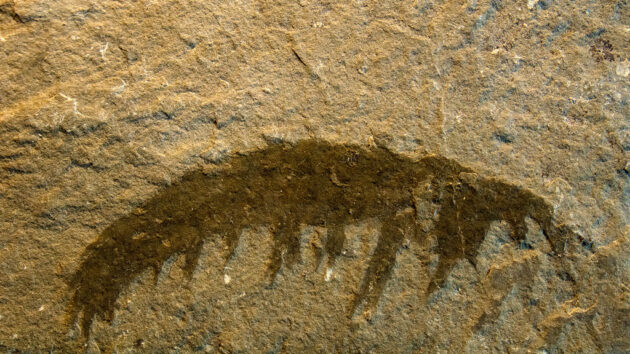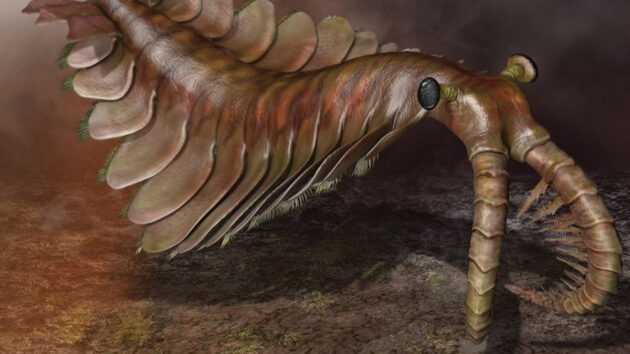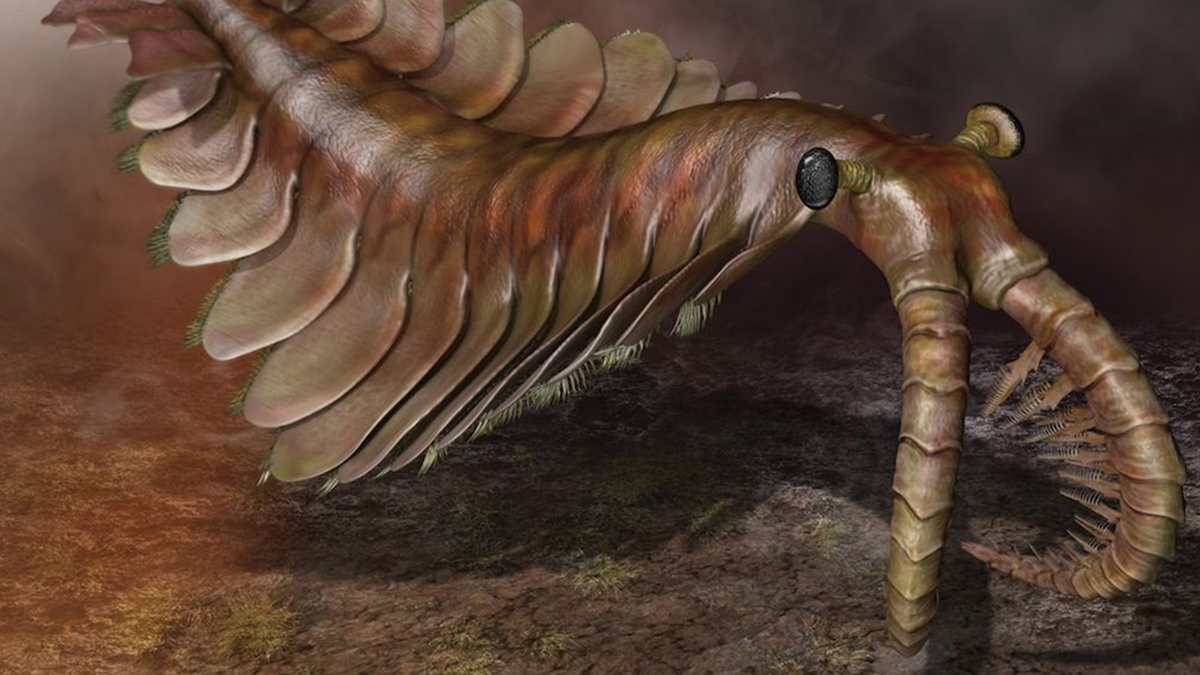It’s said that “Whenever something eats, something dies”. But this wasn’t always so: the earliest organisms were likely microbes that absorbed nutrients directly from their environment. Even today “extremophile” organisms feast on the chemical soup spewing out of deep-ocean volcanic vents.
But, at some point in Earth’s history, the first creature appeared that decided to cut right to the chase, literally, and hunt down the tasty morsels scuttling and swimming around it.
One candidate for the title of “world’s first predator” is a bizarre-looking creature dubbed Anomalocaris canadensis: literally, “Canadian weird shrimp”. The name certainly fits: A. canadensis is one of the weirder denizens of the period in Earth’s history dubbed “the Cambrian explosion”.
The period when the first complex life forms appeared, the Cambrian (542 to 485 million years ago) is known as the “evolutionary test factory”. The remains of hundreds of often bizarre evolutionary experiments are today preserved as fossils in places like Ediacara in South Australia and the Burgess Shale in Canada.

A. canadensis is certainly a poster-child for the Cambrian era’s far-out evolutionary experiments. Roughly 50cm long, the creature had the mouth of a barnacle, the swimming style of a cuttlefish, the front legs of a spider, and an overall resemblance to a giant shrimp. But it’s the animal’s long, spider-like front appendages that are thought to be its hunting apparatus.
In paleontology, there is a longstanding idea that A. canadensis could have been responsible for some of the scarred and crushed trilobite exoskeletons found during its time. But the animal was essentially soft-bodied, meaning it lacked the hard exoskeleton “armor” of some of its contemporaries (such as trilobites). That raises questions over if, and how, the “soft and squishy” A. canadensis could have hunted armored prey.
Russell Bicknell, an evolutionary paleontologist at the University of New England in Australia, and his colleagues are using modern analogues of some of A. canadensis’ major parts to build 3D models to test how it could have stretched and contracted its front appendages in order to grab prey.
They can do so by relying on the geometry of the segmented fossil parts.
“In the model, I move each segment sequentially, and I only stop when something is effectively impaling another part of the body. So we are using the shapes to effectively put limitations on its range of motion,” Bicknell said. Once the range of motion was established, they compared it to movements to modern scorpions and spiders with similar appendages.
“That comparison of maximum extension and minimum rolling to modern forms is how we were able to confidently demonstrate that these animals definitely used their appendages to grab things,” Bicknell said.
As well as establishing the range of motion available to its appendages, the researchers are building “virtual muscles” into the models.
However, it’s not enough to simply establish a range of motion; there’s a question of strength, too. Now, Bicknell and his colleagues are virtually applying muscles to the 3D model to understand the limits of the appendages in grabbing. By using this biomechanical approach, they can test whether the limbs had the strength to crack and crush shells. The model results will help determine, after all these years, whether A. canadensis could have been a trilobite hunter.
Science Daily
The research is a fascinating glimpse into the bizarre evolutionary factory of the very early Earth, “when life was like, ‘I’m going to stick things together and see what we get. Is this how we build a predator?’”

Please share this article so that others can discover The BFD

